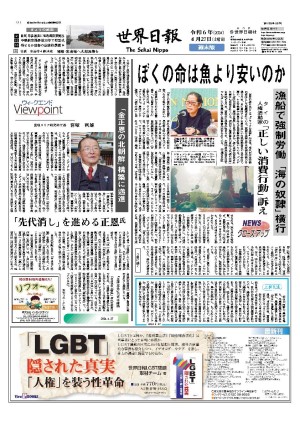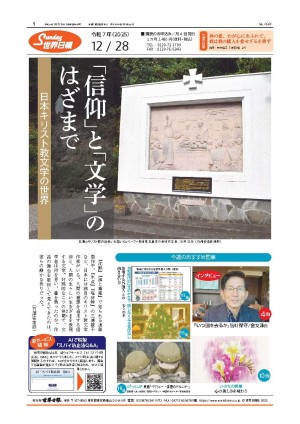TPPはどうなるのか?
エルドリッヂ研究所代表・政治学博士 ロバート・D・エルドリッヂ
 ソフト安保の側面認識を
ソフト安保の側面認識を
日本は米国の再加盟を促せ
環太平洋連携協定(TPP)は2016年4月4日、米国と日本を含む12カ国が締結したにもかかわらず、米大統領選挙で4人の候補のうち3人は明確にその協定の批准に反対を表明した。「緑の党」のジル・スタイン博士がTPPに反対するのは理解できるが、民主党候補のヒラリー・クリントン、共和党候補のドナルド・トランプが反対するのは到底、想像もできなかった。
大統領に当選したトランプ氏のTPPに対するスタンスは一貫していた。実際、15年4月に公式に大統領選に出馬する前も、TPPはアメリカ人労働者にとって良くないと反対を表明していた。ところが、トランプ自身のビジネスは貿易によって利益を得ており、企業寄りの共和党の大統領候補に指名されることから、TPPに賛成するだろうと思われた。だが、トランプは支持しなかった。フォードなどの大企業を批判しながら、雇用や工場を米国に呼び戻すように強く要求した。大統領選期間中、北米自由貿易協定(NAFTA)の再交渉を行い、来年1月20日に大統領に就任するその日のうちにTPPを脱退すると表明した。大統領選から2週間にも満たない11月21日に公開された映像では、TPPを去るという誓いを堅持する方針を明らかにした。
これは、TPPの終わりを意味する。TPPが発効するには署名12カ国合計の国内総生産(GDP)の85%を満たすことが必要だからだ。米国のGDPだけでTPP署名国の62%に達する。米国が参加しなければ必要な基準に達せず、発効できない。
一つの解決方法として、署名国が米国の参加が確保できるよう再交渉することがある。しかし、トランプは2カ国間協定を望んでおり、政治的にこれは考えにくい。その他の署名国でも、当初の合意にサインするために、デリケートな国内バランスが形成されているため、再交渉は難しい。
二つ目のオプションとして、直ちに関連条項を再交渉し、GDPの計算から米国を外すことが考えられる。当然ながら、米国が批准していないTPPは経済的および貿易面でのメリットは少ない。それでもTPPは前進し、米国や他国が将来、改めて加盟することに期待が持てる。
安倍首相は、ニューヨークでトランプと会談した4日後の11月21日、トランプが映像を公開する直前に記者の前で、「米国が参加しないTPPは意味がない」と発言したが、これは大きな失敗だと筆者はみている。2カ月前にクリントン候補と時期尚早の会談をした時と同様に失敗だった。
これはこの地域に特に重要だ。中国のGDPは成長を続け、残された10カ国のほとんどは中国の覇権主義に懸念を抱き、日本が主導権を握ることを願っている。ところが、安倍首相は、自ら日本の役割や存在を否定した。これによって、他の国々は東アジア地域包括的経済連携(RCEP)など中国中心の地域貿易協定に協調せざるを得なくなる。実際、TPPを支持した政府を弱体化させ、政権交代につながったり、国内のパワーバランスが変わって、TPPを支持しなかった政党や政治家に有利になる可能性がある。そのうちの多くは既に親中だ。
問題は貿易そのものというより、その中身で、より具体的に言えば、非民主的で、人権、透明性、著作権、環境を尊重しない中国がどれほど地域に対して影響を与えるかという問題だ。その意味でTPPは経済・貿易だけでなく、安全保障の問題でもある。米国がTPPを批准しないことはアジア太平洋地域を中国に引き渡すことを意味する。
筆者は歴史家として、米国がTPP交渉に尽力しながら、結果として加盟しないことは、第1次世界大戦後に米国が国際連盟を創設しておきながら参加しなかったことと似ているとみている。
トランプらTPPを批判している人々は、TPPが単なる貿易協定ではないことを理解していないようだ。TPPによって、中国が支配する閉鎖的な市場の対立軸としてのオープンで自由な協定の枠組みができあがる。この枠組みは、国際的に受け入れられ、経済大国の隣国の嫌がらせに支配されないルールや規範をもとに定められる。言い換えれば、ソフト安全保障条約である。
中国の悪影響が懸念される中にあって、日本のTPP支持者はこのことを理解している。さらに支持者は、TPP交渉が長く困難なものだったが、日本が必要とする改革をもたらしたことをよく分かっている。日本は地域をリードすべきであり、断念すべきではない。
特に日本は、ほかの署名国にTPPの推進、見直しを呼び掛け、同時に米国との再交渉や台湾など他国の参加を実現するよう指導力を発揮すべきだ。さらに日本政府は、関西に拠点を置く一般財団法人アジア太平洋研究所 が15年10月、将来のTPP事務局(本部)を大阪に誘致するという提言(http://www.apir.or.jp/ja/research/policybrief/4926/)を理解し推進すべきだ。これにより日本が地域に大きくかつ健全な影響を与えることができる。日本国民だけでなく地域の国家に安心を与えるものである。
そのため、日本は迅速に行動しなければならない。地域、そして、世界の未来が懸かっているからだ。
What is Next for the TPP?
During the run-up to the U.S. presidential elections, three of the four candidates openly came out against the Transpacific Partnership agreement, which had been signed by representatives of the U.S. and other eleven governments, including Japan, on February 4, 2016.
While the opposition to the TPP by Dr. Jill Stein, head of the Green Party, was understandable, that of Democratic Party candidate Hillary Clinton and Republican Party candidate Donald Trump was far from predictable.
In the case of Clinton, who served as Secretary of State for four years during much of the time the TPP was negotiated, described the TPP as the “gold standard” in trade agreements. During a visit to Australia in 2012, Secretary Clinton stated, “This TPP sets the gold standard in trade agreements to open free, transparent, fair trade, the kind of environment that has the rule of law and a level playing field, and when negotiated, this agreement will cover 40 percent of the world’s total trade and build in strong protections for workers and the environment.”
In 2015, however, in the run-up to the elections, candidate Clinton came out in opposition to it due to some provisions of the final agreement she did not like. This was not her only flip-flop on trade deals. She had supported the North American Free Trade Agreement ratified during her husband’s presidency, but stated later in 2008, during her initial run to become president herself, that she was opposed to it. She also changed her stance on other trade arrangements as well when she served as a U.S. Senator representing New York.
In light of the fact that most of her major donors were in favor of the TPP, as was her major political benefactor, President Barak Obama, Clinton was seen as likely to support the TPP if she won the presidency (an element that added to public perceptions of her untrustworthiness and lack of principles), but in the end she lost.
With regard to President-elect Trump, his political position on the TPP was always consistent. In fact, even before he was officially a candidate in April 2015, he announced his opposition to the TPP as bad for American workers. And thus, he actually ran “to the Left” of Clinton, whose party was once known as supporting the working class but is now seen as “establishment” and “corporatist” and in favor of the status quo.
However, because Trump has personally benefitted in his business from trade deals and because he was likely to become the nominee for president from the Republican Party, which is seen as pro-business, it was believed that he would actually come out in support of the TPP. He did not, and berated some of the big corporations, such as Ford, to bring back jobs and factories back to the United States. He stated during the campaign he would renegotiate NAFTA, and withdraw from the TPP on the first day of his administration, which begins January 20 next year. And in a video released on November 21, less than two weeks after the election, he announced his intent to carry through with his pledge to leave the TPP.
This pledge effectively ends the TPP because the agreement requires that for it to go into force, countries that ratify the agreement through their domestic legislative processes must represent 85% of the total Gross Domestic Product of the twelve original signatory countries. As U.S. GDP represents 62% of TPP signatory nations, that criteria cannot be reached and the agreement will not go into force without U.S. participation.
One way to address this issue if the signatory countries still desire the agreement is to renegotiate it in a way that would ensure U.S. participation. However, this is politically unlikely in the United States (as Trump has stated he prefers to work bilaterally), and may be difficult politically as well in other countries where delicate domestic balances were created in order to be able to sign the original agreement in the first place.
A second option is to quickly renegotiate the related clauses in the agreement and exclude U.S. GDP from the calculations. Of course, a TPP without the United States has less economic and trade merits, but it would allow for the TPP to go forward and hold out the hope that the United States, and perhaps others, would wish to join again in the future.
In that sense, Prime Minister Abe Shinzō’s comment to the press on November 21, just before Trump’s video, but several days after their meeting in New York on November 17, that the “TPP without the U.S. is meaningless,” was a grave mistake, just like his premature meeting with candidate Clinton in New York two months before.
A TPP without the United States might be economically meaningless, but a TPP agreement today without Japan is politically meaningless. Making a rugby comparison, Japan now needs to carry the ball since the U.S. dropped it or otherwise handed it off.
This is particularly important regionally. The remaining ten countries, most of whom are quite worried about a hegemonic China with its large and growing GDP, look to Japan to fill the leadership vacuum, but Prime Minister Abe’s comment seems to have self-negated it. As such, it is highly likely that the other countries will be forced to go along with a China-centric regional trade arrangement, such as the Regional Comprehensive Economic Partnership or others. In fact, it will undermine regional governments that supported the TPP and possibly cause change in administrations or the domestic balance of power to those parties and politicians who did not, many of whom are already close to China.
The problem is not necessarily the issue of trade, but the terms of that trade, and more specifically, the ability of China, a country that is undemocratic, does not respect human rights, the rule of law, transparency, copyrights, environment, etc., to influence countries in the region. In this sense, TPP is as much about security as it is economics and trade. The U.S.’ not ratifying the TPP is akin to turning the region over to China.
Indeed, as a historian, I find the U.S. effort to negotiate the TPP and the subsequent decision itself not to join it akin to the creation of the League of Nations and the non-participation by the United States after World War I.
Those in the U.S. denouncing the TPP, including Trump, do not seem to understand that the TPP is more than a trade pact. It sets out the framework for an open, liberal arrangement as a counterweight to a Chinese dominated and closed market, with rules and norms that are embraced internationally and not dictated by an economically powerful neighborhood bully. It is, in other words, a soft security arrangement.
Japanese supporters of the TPP understand this, especially in light of the growing negative influence of China. In addition, its supporters understand that accession to the TPP, while somewhat long and difficult in Japan, brought about needed reforms here. Japan should move forward with taking the lead regionally, not give up.
Specifically, Japan should take the lead in mustering the remaining countries to go ahead with the TPP, redesigned for that market, while leaving room for the U.S. to “rejoin” and other countries, such as Taiwan, to access it. Furthermore, it should embrace and promote the October 2015 proposal by the Kansai-based Asia-Pacific Institute of Research (http://www.apir.or.jp/en/research/policybrief/3767/) to invite a future TPP secretariat to Osaka, which would give Japan greater influence in the region. This not only sets at ease the minds of the Japanese public, but that of a majority of the countries in the region as well.
In both of these efforts, Japan has to move quickly. The future of the region, and thus the world, is at stake.





